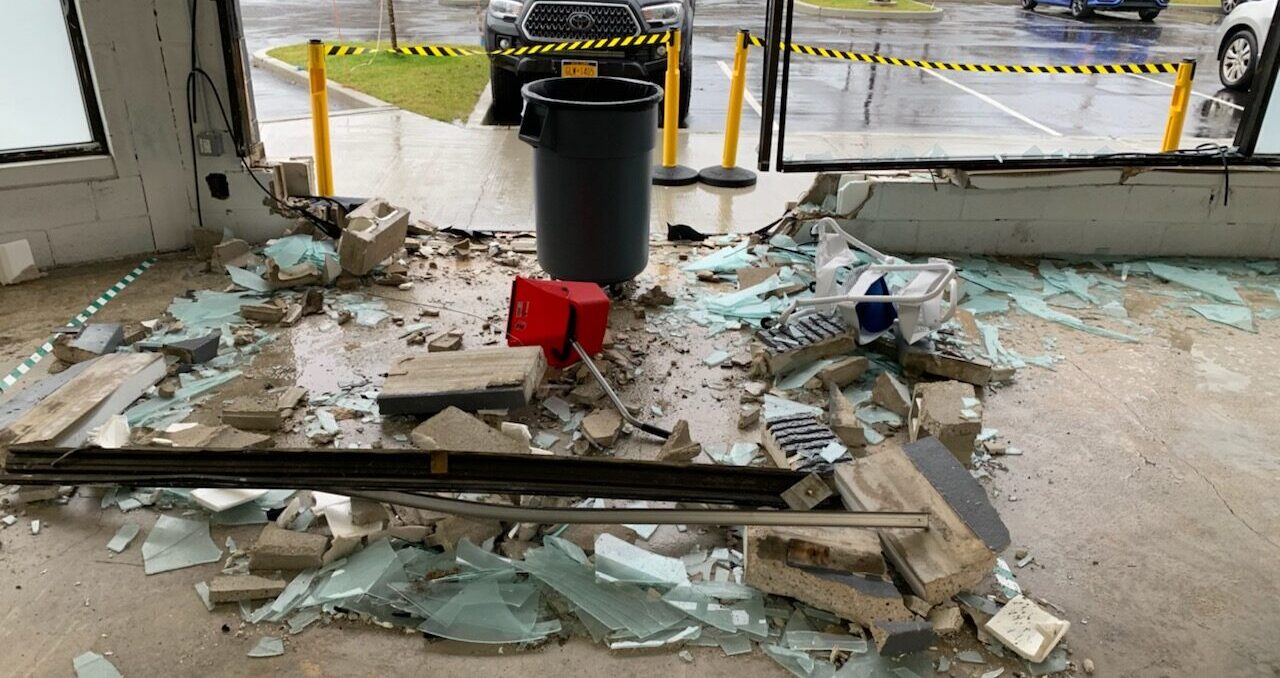When a disaster strikes and affects your commercial property, the aftermath can be profoundly challenging. Beyond addressing the physical damage, the subsequent impact on business operations, revenue, and overall well-being can be severe. However, with a strategic approach and professional support, you can effectively manage this difficult situation and emerge more resilient. This comprehensive guide outlines the essential steps in the commercial damage restoration process, providing you with the knowledge and confidence to protect your business and restore your property.
COMPREHENSIVE PROJECT MANAGEMENT
Navigating the commercial restoration process requires a high level of coordination and project management expertise. Restoration professionals responsible for overseeing your project will assume this critical role, guiding you through every step of the journey.
Communication and Collaboration
The restoration team will maintain open, comprehensive, and transparent communication with you, your insurance provider, and any other stakeholders involved in the project. This collaborative approach ensures all parties are informed, aligned, and working towards a common goal of restoring your property to its pre-disaster condition.
Timeline and Milestone Tracking
Restoration professionals will develop a detailed project timeline, outlining key milestones and deadlines. They will closely monitor progress, adjusting the schedule as necessary to ensure the timely completion of the restoration work.
Insurance Claim Assistance
The restoration team will work closely with your insurance provider, helping to document the damage, prepare necessary paperwork, and advocate on your behalf to ensure a fair and expeditious claims process. Their expertise in this area can be invaluable in maximizing the recovery of your covered losses.
DIVERSIFIED CONTRACTOR OVERSIGHT
Restoration professionals will manage the seamless coordination of all subcontractors involved in the project, from construction crews to specialty cleaning services. This centralized oversight helps maintain quality control, streamline workflow, and minimize disruptions to your business operations. With W Services Group, LLC’s diversified resources across all three divisions of Emergency, Cleaning, and Construction, the process is even more seamless as we have regular teams covering cleanup, mitigation, monitoring, remediation, and construction-related build-back efforts.
Onsite Oversight and Scope Validation
With W Services Group’s national field-based operations management team, you are assured of quality oversight, support, and validation as needed throughout the recovery process.
Prioritizing Occupant Safety
During the commercial restoration process, the safety and well-being of the building’s occupants are of paramount importance. The restoration team will implement robust safety protocols and precautions as applicable to protect everyone involved.
Hazard Mitigation
Restoration professionals will address any immediate safety hazards, such as electrical issues or the presence of toxic substances. They will take necessary steps to isolate these risks and ensure a safe work environment.
Personal Protective Equipment
All restoration workers will be equipped with appropriate personal protective equipment (PPE), including respirators, gloves, and protective clothing. This safeguards the health and safety of team members as they carry out the restoration work.
Indoor Air Quality Monitoring
The restoration team will closely monitor indoor air quality throughout the project as applicable, ensuring that any airborne contaminants are effectively filtered and removed. This step is crucial for maintaining a safe and healthy environment for the building’s occupants during the restoration process.
Adherence to Industry Standards
Commercial restoration professionals will strictly adhere to industry best practices and guidelines, as set forth by organizations like the Institute of Inspection, Cleaning and Restoration Certification (IICRC). This commitment to excellence ensures the highest standards of safety, quality, and professionalism.
Minimizing Business Disruption
One of the primary concerns for commercial property owners facing a fire-related disaster is the potential for significant business disruption. The restoration team understands the urgency of resuming operations and will work diligently to minimize the impact on day-to-day activities.
Ongoing Communication and Updates
Throughout the restoration process, professionals will maintain regular communication with you, providing detailed updates on the project’s progress and any potential impacts on business operations. This transparency helps you plan and make informed decisions
Minimized Downtime
By employing efficient restoration techniques, utilizing specialized equipment, and maintaining a focus on timely completion, the restoration team will work diligently to minimize business downtime, allowing you to resume operations as quickly as possible.
While the commercial damage restoration process is comprehensive, it is essential to have a proactive plan in place to mitigate risks and prepare your business for potential future disasters.
ASSESSMENT
The initial and critical step in the commercial damage restoration process is a comprehensive assessment and inspection of the affected areas. This meticulous process is conducted by trained and experienced damage restoration experts, who thoroughly examine the property to determine the scope and severity of the damage. Based on this information, a tailored restoration plan is developed.
Asset Damage Evaluation
The restoration team will inspect the building’s elements such as walls, floors, and ceilings, to assess the extent of fire or flood impact. This evaluation helps identify scope areas, potential safety hazards, and the need for any immediate measures.
Smoke and Soot Damage Assessment
Smoke and soot can significantly damage commercial property, causing discoloration, corrosion, and pervasive odors. Restoration professionals will analyze the distribution and concentration of these byproducts to select the most effective cleaning and deodorization techniques.
Water Damage Evaluation
In cases of significant water damage, the restoration team will thoroughly inspect for excess moisture, standing water, or hidden pockets of dampness that could lead to microbial or fungal growth and further deterioration.
Hazard Identification
The assessment phase also involves identifying potential hazards, such as electrical issues, compromised asset elements, or the presence of toxic substances. These findings will inform the necessary safety precautions, and the appropriate personal protective equipment (PPE) required during the restoration process.
SECURE SITE
Following the damage assessment, the next critical step is to secure the commercial property and prevent further harm. This phase involves implementing immediate stabilization and protection measures to safeguard the building and its contents.
Boarding Up and Tarping
Securing any openings, such as broken windows or damaged doors, with plywood or tarps is essential. This step protects the interior from the elements and deters unauthorized access and potential vandalism.
Temporary Power and Lighting
In the aftermath of a fire or flood, the property’s electrical system may be compromised, leaving the building without power. The restoration team will establish temporary power sources and lighting to facilitate ongoing work and ensure the safety of occupants and workers.
PROCESSES
Water Extraction and Drying
If significant water intrusion or damage has occurred, restoration professionals will promptly deploy specialized equipment to extract excess water and thoroughly dry the affected areas. This crucial step mitigates the risk of microbial or fungal growth and further deterioration.
Structural Drying
After removing standing water, restoration professionals will use air movers, dehumidifiers, and other specialized equipment to thoroughly dry the building’s structure, including walls, floors, and ceilings. This meticulous drying process helps prevent microbial/fungal development and ensures the property’s structural integrity.
Monitoring and Documentation
Throughout the water damage mitigation process, the restoration team will closely monitor moisture levels and document their findings. This data is essential for insurance claims and serves as a benchmark for determining when the affected areas have been sufficiently dried and restored.
Smoke and Soot Removal
One of the most challenging aspects of commercial fire damage restoration is the effective removal of smoke and soot residue. These byproducts can permeate every surface, causing discoloration, corrosion, and persistent odors that can severely compromise the property’s functionality and occupant safety.
Specialized Cleaning Techniques
Restoration experts will employ a range of specialized cleaning methods and equipment to meticulously remove smoke and soot from walls, ceilings, floors, and other surfaces. This may involve chemical cleaners, abrasive techniques, and advanced air filtration systems to ensure a thorough and effective cleanup.
Odor Elimination
The persistent, acrid odor of smoke can linger long after the visible damage has been addressed. Restoration professionals will use specialized deodorization techniques, such as ozone treatment or hydroxyl generators, to neutralize and eliminate these stubborn odors, restoring the property’s fresh and inviting atmosphere.
CONTENTS
The fire or water impact often extends beyond the building’s structure, affecting personal belongings and valuable assets within. The commercial fire/water damage restoration process includes careful handling and restoration of these contents.
Inventory and Pack-Out
The restoration team will meticulously inventory and carefully pack out all salvageable contents, including furniture, fixtures, equipment, and other valuables. This step ensures proper tracking and safeguarding of these items during the restoration process.
Cleaning and Deodorization
As applicable, packed-out contents will undergo thorough cleaning and deodorization to remove soot, smoke residue, and any lingering odors. Specialized techniques, such as ultrasonic cleaning, and ozone treatment, may be employed to restore these items to their pre-fire condition.
Storage and Temporary Relocation
During the restoration process, clean and deodorized contents will be stored in a secure, climate-controlled environment. In some cases, the restoration team may facilitate the temporary relocation of these items to an off-site facility, ensuring their protection while the property is being repaired.
Inventory Tracking and Return
Restoration professionals will maintain meticulous records of packed-out contents, their cleaning and restoration status, and their eventual return to the property. This level of organization and attention to detail is crucial for ensuring the seamless reintegration of contents upon completion of the restoration work.
RECONSTRUCTION AND REPAIR
With stabilization, cleaning, and contents restoration phases complete, the commercial fire/flood damage restoration process culminates in the reconstruction and repair of the affected property.
Interior Renovations
The interior of the commercial property may require extensive renovations, including the replacement of damaged drywall, flooring, cabinetry, and other finishes. Restoration professionals will collaborate with designers and tradespeople to seamlessly integrate these updates, often enhancing the property’s aesthetic and functionality.
Systems Upgrades
Depending on the extent of the fire/water damage, the restoration process may also involve upgrading or replacing the building’s mechanical, electrical, and plumbing systems. This ensures the property’s systems are up to code and optimized for efficient, safe, and reliable operation.
Permit Acquisition and Inspections
Throughout the reconstruction and repair phase, the restoration team will work closely with local authorities to obtain necessary permits and coordinate any required inspections. This meticulous attention to compliance helps ensure a smooth and successful project completion.
SUMMARY
Partnering with a recovery and restoration management team that possesses expertise across the full spectrum of services required during unforeseen events offers a comprehensive, end-to-end solution. The right team will efficiently and effectively assist in restoring your business operations while keeping you well-informed at every stage of the process, enabling you and your stakeholder team to make the best possible decisions.
Author: Deborah Kleopfer, SVP Strategic Initiatives

